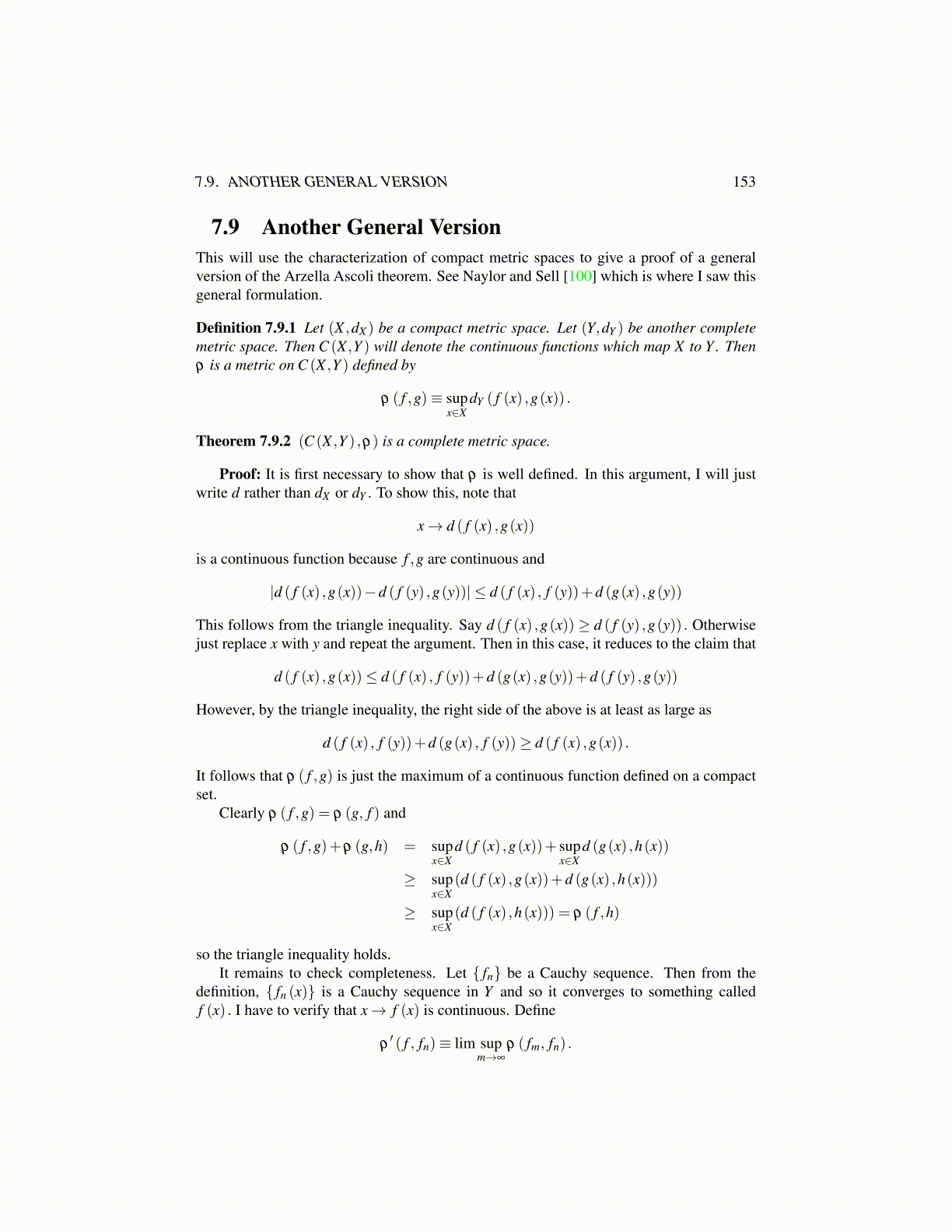
7.9. ANOTHER GENERAL VERSION 153
7.9 Another General VersionThis will use the characterization of compact metric spaces to give a proof of a generalversion of the Arzella Ascoli theorem. See Naylor and Sell [100] which is where I saw thisgeneral formulation.
Definition 7.9.1 Let (X ,dX ) be a compact metric space. Let (Y,dY ) be another completemetric space. Then C (X ,Y ) will denote the continuous functions which map X to Y . Thenρ is a metric on C (X ,Y ) defined by
ρ ( f ,g)≡ supx∈X
dY ( f (x) ,g(x)) .
Theorem 7.9.2 (C (X ,Y ) ,ρ) is a complete metric space.
Proof: It is first necessary to show that ρ is well defined. In this argument, I will justwrite d rather than dX or dY . To show this, note that
x→ d ( f (x) ,g(x))
is a continuous function because f ,g are continuous and
|d ( f (x) ,g(x))−d ( f (y) ,g(y))| ≤ d ( f (x) , f (y))+d (g(x) ,g(y))
This follows from the triangle inequality. Say d ( f (x) ,g(x)) ≥ d ( f (y) ,g(y)) . Otherwisejust replace x with y and repeat the argument. Then in this case, it reduces to the claim that
d ( f (x) ,g(x))≤ d ( f (x) , f (y))+d (g(x) ,g(y))+d ( f (y) ,g(y))
However, by the triangle inequality, the right side of the above is at least as large as
d ( f (x) , f (y))+d (g(x) , f (y))≥ d ( f (x) ,g(x)) .
It follows that ρ ( f ,g) is just the maximum of a continuous function defined on a compactset.
Clearly ρ ( f ,g) = ρ (g, f ) and
ρ ( f ,g)+ρ (g,h) = supx∈X
d ( f (x) ,g(x))+ supx∈X
d (g(x) ,h(x))
≥ supx∈X
(d ( f (x) ,g(x))+d (g(x) ,h(x)))
≥ supx∈X
(d ( f (x) ,h(x))) = ρ ( f ,h)
so the triangle inequality holds.It remains to check completeness. Let { fn} be a Cauchy sequence. Then from the
definition, { fn (x)} is a Cauchy sequence in Y and so it converges to something calledf (x) . I have to verify that x→ f (x) is continuous. Define
ρ′ ( f , fn)≡ lim sup
m→∞
ρ ( fm, fn) .